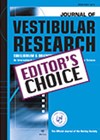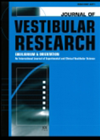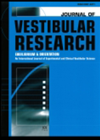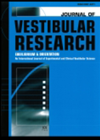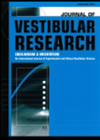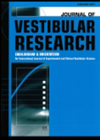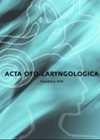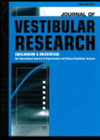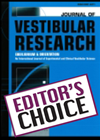
Journal Reviews
Obstructive sleep apnoea in common vestibular disorders
The importance of getting a good night’s sleep is often acknowledged but may be particularly difficult to achieve for those with obstructive sleep apnoea (OSA). In addition to high blood pressure, increased risk of stroke and depression, balance problems may...
The vestibular system is not immune to chronic otitis media
It is well recognised that chronic otitis media (COM) is a risk factor for sensorineural hearing loss. Studies on the effect of COM on vestibular function have been beset by design biases. The authors designed a case control study to...
Does the season affect the diagnosis of vestibular disorders?
There are mixed results in the literature regarding seasonal variation in the presentation of various peripheral vestibular disorders. In this large population study involving over 20,000 patients recruited from 116 ENT practices across Germany, the authors analysed the demographic characteristics...
Diagnostic criteria for haemodynamic orthostatic dizziness
Over the past several years, the Bárány Society has been developing an International Classification of Vestibular Disorders (ICVD) in order to standardise diagnosis and nomenclature for both clinical and research purposes. Many in vestibular practice would be familiar with the...
BPPV and bone mineral density
Over the years, attempts have been made to identify modifiable risk factors for BPPV. Due to the chemical composition of otoconia, the role of calcium metabolism and its associated conditions have been studied with no firm conclusions. The authors studied...
International classification of bilateral vestibulopathy (BVP)
In the past few years the Bárány Society have been standardising the diagnostic criteria for various vestibular disorders – International Classification of Vestibular Disorders (ICVD). Diagnosis of BVP relies on history, bedside clinical assessment and objective vestibular tests. The authors...
Diagnosing persistent postural-perceptual dizziness (PPPD)
The authors, part of an influential committee of experts of the Bárány Society, proposed this consensus document after reviewing 30 years of research on phobic postural vertigo, space-motion discomfort, visual vertigo, and chronic subjective dizziness. They also reviewed interesting historical...
The effect of vertigo on sleep
The authors analysed data of 20,950 individuals who completed the balance and dizziness supplements of the ongoing NHIS survey in 2008. The survey used a strict algorithm to identify individuals reporting vestibular vertigo and information on sleep duration and a...
Are vascular loops at the CPA of any clinical significance?
Neurotologists have grappled with this question for many years. The aim of the study was to determine the clinical relationship of vertigo symptoms with vascular loop compression syndrome using 3D T2WI turbo spin echo high-resolution MRI. The study included 417...
Comparison between objective and subjective BPPV
BPPV presentation in ENT clinics is variable. The objective of this study was to examine differences in demographic and clinical features, as well as treatment outcomes, between classic objective BPPV (O-BPPV) and subjective BPPV (S-BPPV). Unlike classic BPPV (with nystagmus),...
Using cVEMPs to distinguish between vestibular migraine and from Ménière’s
Vestibular migraine (VM) and Ménière’s disease (MD) could overlap or mimic each other. Since the use of cVEMPs became routine, attempts have been made by researchers to explore its clinical utility in these two conditions. In this prospective study, the...
Type 2 diabetes and BPPV
Previous research has shown an association between BPPV and certain medical conditions such as hypertension, hyperlipidaemia and type 1 diabetes. The authors in this retrospective observational study investigated the interaction between BPPV and type 2 diabetes by examining the ‘role...

